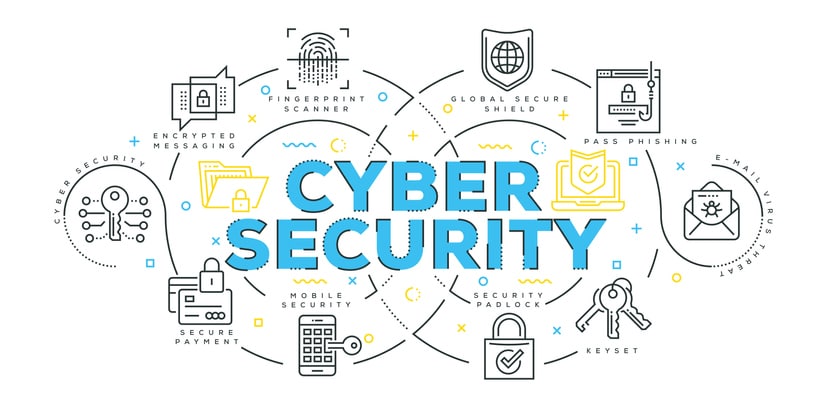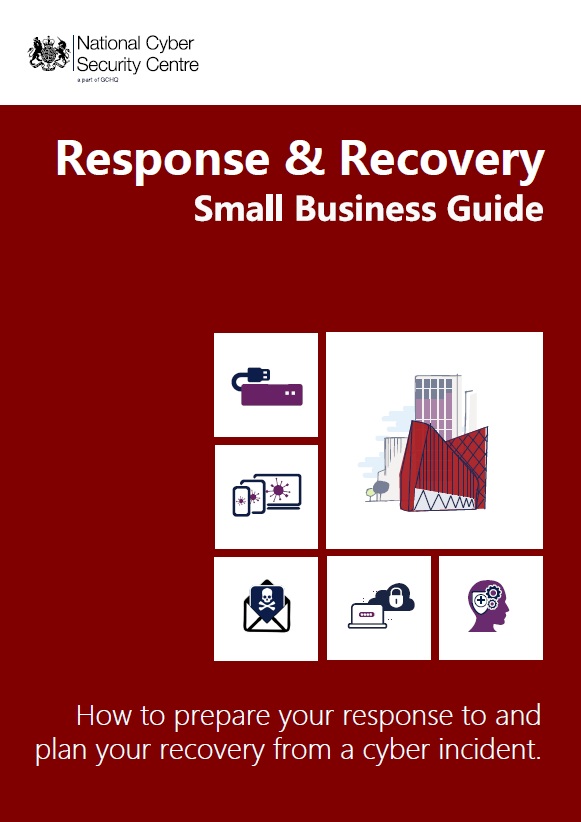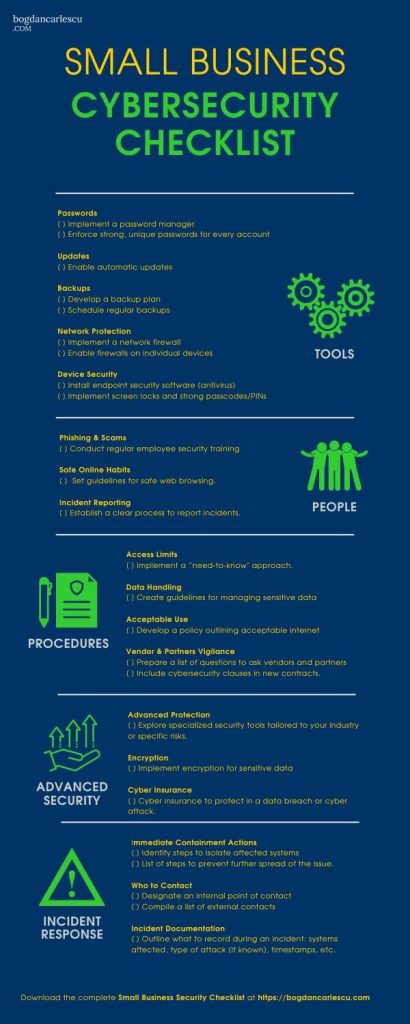
Introduction
Overview of Cybersecurity
In today’s digital age, cybersecurity has become a cornerstone of business operations. It refers to the practices, processes, and technologies designed to protect devices, networks, and sensitive data from cyber threats. The landscape of cybersecurity is ever-evolving, adapting to new technologies and methodologies as hackers devise increasingly sophisticated attacks.
Imagine a small business owner, Jane, whose bakery relies on a simple online ordering system. In her haste to establish an online presence, she might overlook essential security measures like encryption or secure payment gateways. Unfortunately, this oversight can lead to devastating consequences if a cybercriminal intercepts her customers’ personal information.
Why Cybersecurity is Crucial for Small Businesses
Small businesses are often seen as low-hanging fruit for cybercriminals, making robust cybersecurity measures indispensable. Here’s why:
- Financial Loss: A single data breach can cost thousands of dollars in recovery and legal fees.
- Reputation Damage: Trust is essential in business; losing customer confidence can take years to rebuild.
- Regulatory Compliance: Failure to protect customer data can lead to hefty fines and legal repercussions.
Understanding cybersecurity is not just a technical concern; it’s a fundamental aspect of maintaining a viable, trustworthy business in an increasingly interconnected world. By prioritizing cybersecurity, small businesses can safeguard their assets and build lasting relationships with their customers. As highlighted on TECHFACK, a proactive approach to cybersecurity is vital for survival in this digital landscape.

Types of Cyber Threats
Phishing Attacks
Phishing attacks have risen sharply, targeting unsuspecting users with emails or messages that appear to be from legitimate sources. Take, for instance, a recent scenario where an employee at a small firm received an urgent email seemingly from their CEO. The message requested sensitive information, leading to a data breach. Recognizing the signs of phishing can save businesses from substantial losses. Common indicators include:
- Poor grammar or spelling
- Unusual sender addresses
- Suspicious attachments or links
Ransomware
Ransomware is perhaps one of the most notorious cyber threats, encrypting a business’s vital data and holding it hostage until a ransom is paid. A small healthcare provider found itself in deep trouble when faced with this predicament. The hackers demanded payment in cryptocurrency, leaving the office scrambling to regain access to critical patient records. The unfortunate reality is that:
- 40% of small businesses never recover from a ransomware attack
- Paying the ransom does not guarantee data retrieval
Malware
Malware, or malicious software, encompasses a wide range of threats, from viruses to spyware, designed to disrupt computer operations. A small ecommerce site fell victim when an unsuspecting employee clicked on a malicious link, compromising customer data. It underscores the importance of employing robust antivirus solutions. Here are a few types of malware:
- Viruses: Infect files and spread to other systems.
- Spyware: Collects information without users’ knowledge.
- Adware: Displays unwanted advertisements, usually leading to further issues.
Social Engineering
Social engineering manipulates individuals into divulging confidential information. It exploits human psychology rather than technical vulnerabilities. A striking example involves a phone call from a “tech support” agent who convinced an employee to share their login credentials. Key tactics to watch for include:
- Pretexting: Creating a fabricated scenario to steal information.
- Baiting: Offering something enticing to lure users into a trap.
By understanding these various types of cyber threats, small businesses can better prepare their defenses and protect themselves from potential risks. As emphasized on TECHFACK, staying informed is the first step in a comprehensive security strategy.

Common Vulnerabilities in Small Businesses
Weak Passwords
One of the most significant vulnerabilities in small businesses is weak passwords. It’s not uncommon to find employees using easily guessable passwords, such as “123456” or “password.” A small marketing agency experienced a major setback when a hacker accessed their system via a compromised password of a single employee who used the same password across multiple accounts. To strengthen security, businesses should encourage practices like:
- Setting complex password requirements (a mix of letters, numbers, and symbols)
- Implementing multi-factor authentication (MFA)
- Regularly updating passwords
Lack of Employee Training
Another vulnerability that can leave small businesses exposed is the lack of comprehensive employee training. Employees, often the first line of defense against cyber threats, may not be fully aware of the potential risks. A local toy store faced an incident where an employee clicked on a phishing link due to a lack of training. To mitigate this risk, businesses can:
- Provide regular cybersecurity awareness training sessions
- Simulate phishing attacks to test employee awareness
- Create accessible resources for employees to reference
Outdated Software
Running outdated software can also pose serious security threats. Many small businesses prioritize cost-cutting over updates, inadvertently leaving themselves vulnerable. An accounting firm found this out the hard way when outdated applications were exploited, leading to the leakage of sensitive client data. To combat this issue, it’s essential to:
- Schedule regular updates for all software and systems
- Utilize automated patch management tools
- Monitor end-of-life timelines for software
Inadequate Data Backup
Finally, inadequate data backup can wreak havoc on a small business, especially after a cyberattack. A small real estate agency lost significant customer data during a ransomware attack because they hadn’t implemented reliable backup solutions. Here are some best practices for ensuring data integrity:
- Use a combination of cloud and local backups
- Schedule automated backups regularly
- Test recovery processes to ensure data can be restored
By identifying these common vulnerabilities, small businesses can take proactive steps to safeguard their operations. It’s crucial for small organizations to remain vigilant and invest in adequate training and tools to fortify their cybersecurity, as highlighted in the resources provided by TECHFACK.

Importance of Cybersecurity Measures
Protecting Customer Data
The protection of customer data stands as one of the foremost reasons small businesses must prioritize cybersecurity measures. In today’s world, consumers expect their personal information to be safeguarded. Consider the case of a small online clothing store that failed to encrypt customer payment information. When hackers accessed the data, not only did they compromise customer security, but they also jeopardized the business’s future. Implementing robust cybersecurity protocols helps to:
- Secure sensitive data such as personal identification and payment details
- Build customer trust and loyalty
- Avoid financial repercussions from data breaches
Preserving Business Reputation
In an era where word spreads quickly, a single cybersecurity incident can tarnish a business’s reputation. A small tech startup experienced this firsthand when their client data was breached, leading to a public relations disaster. Customers chose to take their business elsewhere, and the startup struggled to rebuild trust. Therefore, maintaining strong cybersecurity measures is crucial for:
- Ensuring positive customer experiences
- Enhancing brand credibility in the market
- Fostering long-term business relationships
Legal and Regulatory Compliance
Lastly, the legal implications of cybersecurity cannot be understated. Many industries have stringent regulations regarding customer data protection, and failing to comply can result in hefty fines. For instance, a local healthcare provider faced significant penalties after neglecting to secure patient records according to HIPAA regulations. To navigate this landscape effectively, businesses must:
- Stay informed about relevant laws and regulations
- Implement necessary security measures to comply
- Regularly audit practices to ensure ongoing compliance
By emphasizing the importance of cybersecurity measures, small businesses can protect their customers, preserve their reputation, and remain compliant with the law. As detailed on TECHFACK, investing in cybersecurity isn’t just a protective measure; it’s a strategic business decision that paves the way for long-term success.

Implementing Cybersecurity for Small Businesses
Conducting Risk Assessments
To effectively safeguard their operations, small businesses must start by conducting thorough risk assessments. This process involves identifying potential vulnerabilities, prioritizing assets, and evaluating the effectiveness of existing security measures. For instance, a small restaurant chain realized that outdated point-of-sale systems posed a high risk after a routine assessment. By regularly conducting risk assessments, businesses can:
- Pinpoint areas in need of immediate attention
- Allocate resources more effectively based on risks
- Foster a culture of proactive security awareness among staff
Investing in Security Software
After identifying vulnerabilities, investing in robust security software is crucial. Many small businesses may dismiss this as an unnecessary expense; however, it is an essential line of defense. Take a small graphic design firm, for example, which invested in firewalls and antivirus programs. Following this investment, they witnessed a significant decrease in malware incidents. A few key software considerations include:
- Antivirus and anti-malware software: Essential for detecting and eliminating threats before they cause harm.
- Firewalls: Protect the network from unauthorized access.
- Encryption tools: Safeguard sensitive data during storage and transmission.
Creating a Response Plan
Finally, establishing a robust response plan is vital for minimizing damage in the event of a cyber incident. Many small businesses may overlook this step, but having a plan in place can significantly reduce recovery time. A local furniture retailer faced a cyberattack but, thanks to their established response plan, was able to restore operations quickly. Important components of a response plan should include:
- Clearly defined roles and responsibilities
- A detailed communication strategy for stakeholders
- Regularly scheduled reviews and updates of the response procedure
By implementing these cybersecurity measures, small businesses can create a strong defense against potential threats, ensuring a safer and more secure operational environment. As we continue to explore cybersecurity on TECHFACK, it becomes increasingly clear that preparation is key to resilience in the digital age.

Training and Educating Employees
Importance of Cybersecurity Training
As the last line of defense against cyber threats, employees play a critical role in an organization’s security posture. Without proper training, even the most sophisticated cybersecurity measures can falter. For example, a small law firm faced a costly data breach because employees were unaware of the risks associated with phishing emails. By investing in cybersecurity training, businesses can significantly reduce the likelihood of such incidents. Key benefits of this training include:
- Heightened awareness of potential threats: Employees can stay vigilant against phishing attacks, social engineering, and other tactics used by cybercriminals.
- Enhanced incident response: Trained employees can act quickly and efficiently in case of a security event, minimizing damage.
- Improved compliance: Familiarity with policies and procedures helps ensure that employees adhere to legal and regulatory requirements regarding data protection.
Best Practices for Staff Awareness
To cultivate a culture of cybersecurity resilience, small businesses should adopt best practices for staff awareness. Here are some effective strategies:
- Regular training sessions: Conduct these at least semi-annually to keep security protocols fresh in employees’ minds.
- Simulated phishing exercises: These can help employees recognize red flags and learn to respond appropriately.
- Clear reporting procedures: Encourage staff to report suspicious activity and provide an easy channel for communication.
Additionally, promoting an open dialogue about cybersecurity concerns can empower employees to take ownership of their responsibilities. By fostering a secure workplace through employee education, small businesses can significantly mitigate risks. As discussed in various insights on TECHFACK, prioritizing staff training is a pivotal facet of an effective cybersecurity strategy.

Securing Online Transactions
Using Secure Payment Gateways
In today’s digital marketplace, securing online transactions is paramount for maintaining both customer trust and business integrity. One effective way to achieve this is by utilizing secure payment gateways. These gateways act as intermediaries between a customer’s bank and the business, ensuring that sensitive financial information is transmitted safely. For instance, a local bookstore improved its online sales significantly after integrating a reputable payment gateway, learning firsthand how crucial security is for customer confidence. Key benefits of using secure payment gateways include:
- Fraud prevention: Advanced security features like tokenization and encryption help protect customer data.
- Enhanced customer experience: A smooth and secure checkout process encourages repeat business.
- Reduced liability: Businesses can better shield themselves from potential fraud-related losses.
Implementing SSL Certificates
Another essential component in securing online transactions is installing SSL (Secure Socket Layer) certificates on the company website. This technology encrypts the data exchanged between the customer and the site, making it incredibly difficult for hackers to intercept. A small tech firm discovered this when they added an SSL certificate and saw a drop in abandoned shopping carts. It provides both functional and reputational advantages:
- Data encryption: Protects sensitive information like credit card details during transmission.
- Trust signals: An SSL certificate displays visual cues, such as a padlock icon, which reassures customers that their information is safe.
- SEO benefits: Search engines prioritize secure sites, potentially improving visibility and driving traffic.
By implementing secure payment gateways and SSL certificates, small businesses can create a safer online environment for transactions. As TECHFACK emphasizes, prioritizing online security is not just a safeguard; it’s an essential strategy for growth and customer engagement.

Incident Response and Recovery
Detecting Security Incidents
Effective incident response begins with an ability to swiftly detect security incidents. Early detection can mitigate the impact of a breach, making it essential for small businesses to monitor their systems consistently. For example, a small financial advisory firm recently installed monitoring software that flagged unusual login attempts. By catching this issue early, they were able to prevent a potentially damaging breach. Here are some strategies for enhancing detection capabilities:
- Implementing Intrusion Detection Systems (IDS): These systems monitor network traffic for suspicious activities and alert administrators in real time.
- Conducting regular security audits: Regular assessments can help identify vulnerabilities before they can be exploited.
- Utilizing threat intelligence tools: Many businesses benefit from external resources that provide real-time updates on emerging threats and vulnerabilities.
Responding to Data Breaches
When a data breach does occur, having a robust response plan in place is crucial for minimizing damage. The importance of this became evident to a local e-commerce company when it experienced a significant cyberattack. Thanks to their prepared incident response plan, they quickly implemented measures to contain the breach and informed affected customers without delay. Here are essential steps in responding to a data breach:
- Contain the breach: Immediately isolate affected systems to prevent further data loss.
- Assess the damage: Determine the extent of the breach and what data has been compromised.
- Communicate transparently: Notify affected stakeholders and customers about the breach and outline steps being taken to address the situation.
By effectively detecting security incidents and having a solid response strategy, small businesses can navigate the complexities of data breaches with confidence. TECHFACK emphasizes that preparedness is not just about preventing threats; it’s about ensuring resilient recovery from any potential challenges that may arise.

Collaboration and Partnerships
Working with Cybersecurity Experts
To bolster cybersecurity efforts, small businesses can immensely benefit from collaborating with cybersecurity experts. For instance, a small manufacturing firm reached out to a cybersecurity consultant after suffering a breach. This partnership helped establish a comprehensive security strategy tailored to their specific needs. Working with experts can provide small businesses with various advantages, including:
- Access to specialized knowledge: Experts can offer insights into emerging threats and the latest protective technologies.
- Customized security solutions: Tailored strategies can address unique vulnerabilities specific to the business sector.
- Ongoing support and guidance: Establishing a long-term relationship can facilitate continuous improvement in security measures.
Joining Information Sharing Networks
Another effective strategy is joining information sharing networks, where organizations collaboratively share data about threats and vulnerabilities. A local restaurant chain participated in an industry-wide group and found out about a wave of phishing scams targeting similar businesses. This proactive sharing of information enabled them to enhance their defenses. Benefits of these networks include:
- Greater awareness: Sharing experiences with other businesses creates a collective understanding of prevalent risks.
- Improved response strategies: Collaboration can lead to the development of more effective and comprehensive incident response plans.
- Building community resilience: By working together, businesses can create a more robust defense against cyber threats affecting their industry.
By fostering collaboration—with cybersecurity experts and within industry networks—small businesses can significantly enhance their security posture. As highlighted on TECHFACK, effective partnerships and information sharing are vital components of a well-rounded cybersecurity strategy that helps businesses stay one step ahead of potential threats.

Conclusion
Recap of Key Points
In today’s digital landscape, understanding cybersecurity is critical for small businesses. Throughout this discussion, we’ve explored various facets of cybersecurity, from recognizing common threats like phishing and ransomware to highlighting the importance of employee training and securing online transactions. By focusing on incident response and establishing strong collaborations, businesses can create a solid defense against cyber threats. Here are the key takeaways:
- Conduct regular risk assessments to identify vulnerabilities.
- Invest in robust security software and secure payment gateways.
- Train employees on cybersecurity best practices to enhance awareness.
- Establish clear incident response plans to act swiftly during a breach.
- Collaborate with cybersecurity experts and join information sharing networks for valuable insights.
Encouragement for Taking Action
With this valuable knowledge in hand, it’s time for small businesses to take proactive steps to strengthen their cybersecurity posture. Implementing even a few of the discussed measures can have a significant impact. Consider initiating training sessions for your team, investing in crucial security tools, or seeking partnerships with experienced cybersecurity consultants.
Remember, the journey toward enhanced cybersecurity doesn’t have to be overwhelming. Start small, assess your current practices, and gradually build a more secure environment. As emphasized throughout this article and on TECHFACK, taking action now will not only protect your business but also build trust with your customers. The cybersecurity landscape is constantly evolving, and your commitment to staying informed and prepared will make all the difference in safeguarding your organization’s future.

